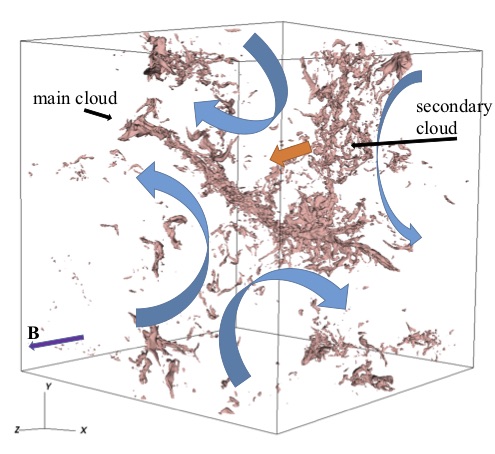Ideal MHD high resolution AMR simulations with driven turbulence and self-gravity have been performed that demonstrate the formation of long filamentary molecular clouds at the converging location of large-scale turbulence flow, bounded by gravity, and the magnetic field helps shaping and reinforcing the long filamentary appearance. The main filamentary cloud has a length of ~4.4 pc. Instead of a monolithic cylindrical structure, the main cloud is shown to be a collection of fiber/web-like sub-structures similar to filamentary clouds such as L1495. Unless the line-of-sight is close to the mean field direction, the large-scale magnetic field and striations in the simulation are found roughly perpendicular to the long axis of the main cloud, similar to 1495. This provides strong support for a large-scale moderately strong magnetic field surrounding L1495. We find that the projection effect from observations can lead to incorrect interpretations of the true three-dimensional physical shape, size, and velocity structure of the clouds. Helical magnetic field structures found around filamentary clouds that are interpreted from Zeeman observations can be explained by a simple bending of the magnetic field that pierces through the cloud. We demonstrate that two dark clouds form a T-shape configuration which are strikingly similar to the Infrared dark cloud SDC13 leading to the interpretation that SDC13 results from a collision of two long filamentary clouds. We show that a moderately strong magnetic field (M_A ~ 1) is crucial for maintaining a long and slender filamentary cloud for a long period of time ~0.5 million years. (As it appears in paper).
Li, Pak Shing; Klein, Richard I.
2019, MNRAS, Volume 485, Issue 4, p.4509-4528
http://adsabs.harvard.edu/abs/2019MNRAS.485.4509L
